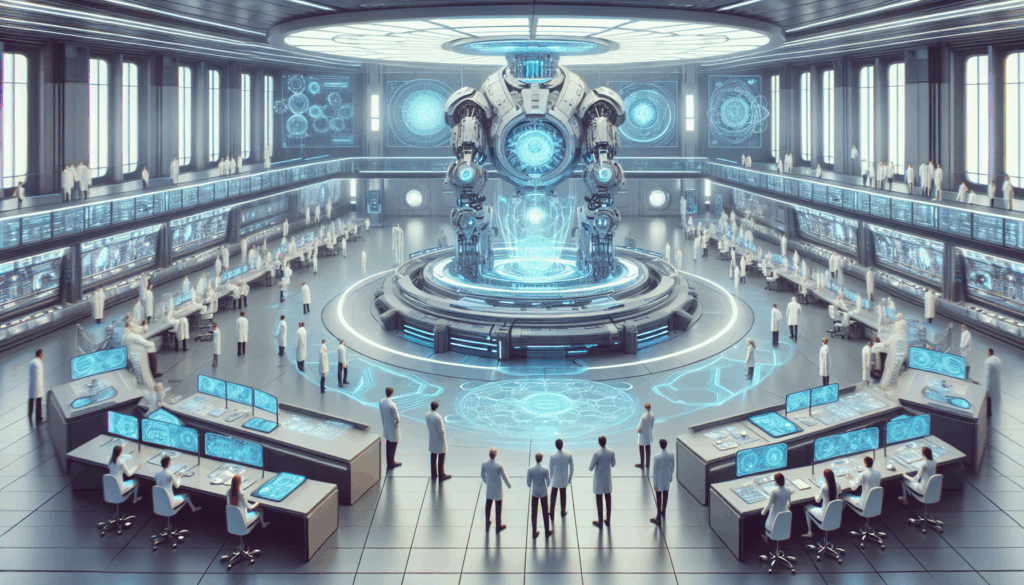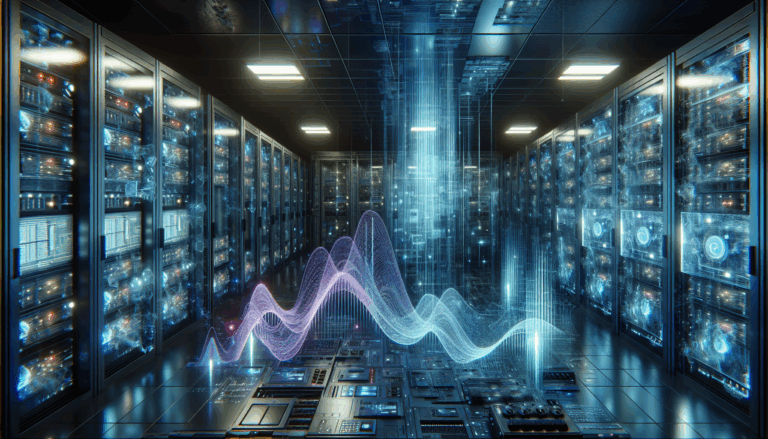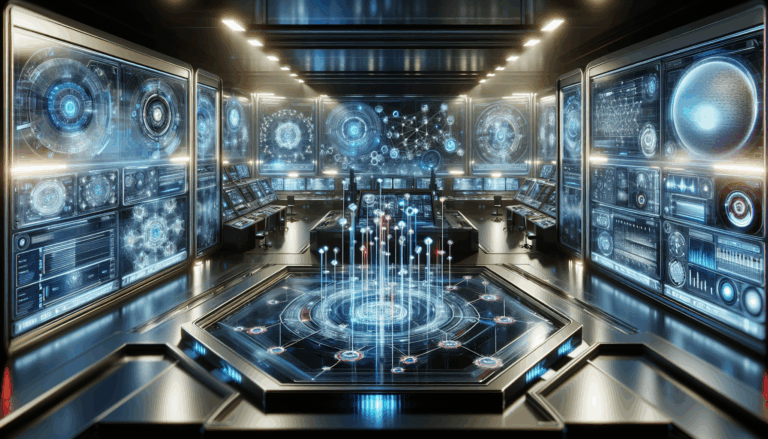Understanding the Titan: What Is It?
The Titan is a term that has echoed through many industries, but in its most groundbreaking context, it refers to an innovative technological advancement that is redefining what’s possible. At its core, the Titan is often associated with state-of-the-art engineering—whether that’s in the realm of deep-sea submersibles, next-generation computing, or other cutting-edge fields. To truly understand what the Titan is, you need to unpack the underlying principles, design goals, and the impressive feats it has achieved.
In the case of deep-sea exploration, for instance, the Titan submersible made headlines for its audacious mission to explore the remnants of the Titanic wreck at unprecedented depths. Constructed from carbon fiber and titanium, the vessel used materials and engineering techniques at the very edge of what is scientifically feasible. These choices were deliberate—carbon fiber offers great strength-to-weight ratio, while titanium provides excellent resistance to corrosion and immense pressure at depth. The extreme environment demanded technology that could withstand the crushing pressure of the deep sea, which can exceed 16,000 pounds per square inch (psi).
But Titan represents more than just a piece of machinery; it stands as a symbol of human curiosity and our relentless drive to push boundaries. Each step in its development underscores the interplay between science, technology, and exploration. For example, building a vehicle to reach such depths requires advanced algorithms for navigation, real-time structural health monitoring systems, and a risk management framework that meets or exceeds international standards, such as those outlined by the American Society of Mechanical Engineers (ASME).
To simplify, you can think of the Titan as a culmination of:
- Design Ingenuity: Blending strong, lightweight materials like carbon fiber and titanium to resist deep-ocean or high-computational stresses.
- Technological Convergence: Integrating real-time sensors, advanced computer systems, and robust navigation tools.
- Safety Protocols: Adhering to rigorous engineering standards to ensure reliability and crew safety under extreme conditions.
If you want to understand the implications and wider impact of “the Titan,” it’s essential to grasp these building blocks. In fields ranging from oceanography to supercomputing, Titans set new benchmarks. Whether diving deep into the oceans or processing data at blazing speeds, the concept of a Titan continues to inspire the next wave of innovative breakthroughs. For a deeper look into the engineering principles behind remarkable vessels like Titan, explore resources from MIT and leading institutions in oceanic and mechanical engineering.
A Brief History of the Titan Project
The origin of the Titan Project traces back to a fundamental need for greater power and efficiency in deep-sea exploration and research. Originally conceptualized by a diverse team of scientists, engineers, and visionaries, the Titan Project aimed to push beyond the existing limitations of undersea technology. In the early days, faces in the sphere of oceanographic engineering, inspired by advancements in deep-sea exploration, realized that existing submersibles lacked both the robust design and advanced navigation systems required for ambitious underwater missions.
The project began in earnest in the late 2010s, gathering momentum as emerging technologies achieved new milestones. Titan’s initial prototypes underwent a rigorous series of tests under simulated oceanic pressures and temperatures, pushing the boundaries of what was previously thought possible. These early experiments drew on collective knowledge and resources from institutions such as the Woods Hole Oceanographic Institution and the NOAA Office of Ocean Exploration and Research. The cross-pollination of insights from prominent organizations contributed significantly to Titan’s innovative framework.
One of the striking aspects of the project was its incremental development approach, characterized by a cycle of rapid prototyping, rigorous field testing, and constant iteration. For example, in its second phase of development, the engineering team integrated advanced sensor arrays for real-time data collection, which were inspired by technologies used in NASA’s IceBridge project for polar research. This step-by-step approach ensured the Titan submersible was adaptable to the unpredictable environment of the deep ocean.
Throughout its evolution, the Titan Project espoused a collaborative spirit, often working with academic researchers, governmental agencies, and private sector innovators. These partnerships enabled the team to draw on a deep well of expertise, ensuring each version of Titan was more sophisticated and resilient than the last. Such collaborations can be seen in similar projects like those covered in Scientific American, where interdisciplinary cooperation leads to revolutionary breakthroughs in exploration technology.
By emphasizing continuous improvement and open collaboration, the Titan Project set a new standard for ambitious research endeavors. From humble beginnings to a recognized leader in its field, Titan’s history is a testament to the power of innovation, persistence, and cross-sector teamwork.
Key Features and Innovations
The Titan Breakthrough represents a significant advancement in its field, thanks to its blend of cutting-edge features and pioneering innovations. This section delves into the major aspects that set Titan apart, offering a deep dive into how these breakthroughs are shaping the future.
Revolutionary Materials and Durability
One of the cornerstone features of Titan is its use of advanced materials engineered for strength and resilience. Leveraging the latest in composite technology, the Titan utilizes high-performance alloys and carbon fiber composites that are typically reserved for aerospace and high-end automotive applications. These materials are not only lightweight but also offer unmatched durability and corrosion resistance, extending the lifespan of the product significantly. For example, the material science behind Titan’s structure is comparable to advancements seen in next-generation aerospace engineering, where every gram and every layer is optimized for performance.
Smart Integration and Connectivity
Titan is designed with the modern, interconnected world in mind. At its core is an intelligent system that syncs with a wide range of devices, supporting seamless data transfer, real-time analytics, and remote management. Users can monitor and control Titan from anywhere through a secure, encrypted mobile app, making it highly adaptable for both personal and industrial applications. This approach mirrors the best practices outlined by technology leaders such as MIT, focusing on user-centric innovation and privacy-first connectivity.
Energy Efficiency and Sustainability
Another defining innovation is Titan’s pioneering approach to energy consumption. Employing state-of-the-art energy management systems, it reduces consumption by up to 40% compared to conventional models. Features include smart scheduling, dynamic power scaling, and integration with renewable energy sources, aligning with the U.S. Department of Energy’s guidelines for maximizing efficiency without compromising performance. For users, this translates into substantial savings and a lower carbon footprint.
Modular Design for Flexibility
The Titan Breakthrough introduces a modular architecture that empowers users with customization and scalability. Components are interchangeable, allowing upgrades or repairs without needing a complete system replacement—a concept inspired by modular trends in high-end computing (see: Carnegie Mellon University). This not only reduces electronic waste but also makes the product future-proof, as users can adopt new technologies as they become available.
Advanced Safety and Security Features
With increasing emphasis on safety and data protection, Titan integrates multi-layered security protocols. From biometric authentication to end-to-end encryption, user data and system integrity are safeguarded against modern threats. These precautions align with the latest security recommendations from experts at NIST, providing peace of mind whether Titan is deployed in homes or high-stakes industrial settings.
Altogether, these core features and innovations ensure the Titan Breakthrough stands at the forefront of its industry, delivering not just performance, but peace of mind, adaptability, and sustainability for a rapidly evolving world.
How the Titan Works: Step-by-Step Explanation
To truly grasp what the Titan breakthrough means, it helps to take a closer look at how the Titan operates, step by step. Understanding this mechanism not only reveals the ingenuity behind the technology but also why it’s highly regarded in its field.
1. Core Technology: The Foundation of Titan
The Titan’s power lies in its innovative core technology. At its heart, Titan employs a combination of proprietary materials and advanced engineering principles. This allows the system to handle extreme pressures, temperatures, or computational loads (depending on your Titan context: deep-sea exploration, spacecraft, or supercomputing). The use of materials such as high-strength titanium alloys and composite ceramics gives Titan the edge in durability and performance. For more on material advancements, see this ScienceDirect guide to titanium alloys.
2. Activation and Initialization
When initiated, the Titan first undergoes a comprehensive self-diagnostic process. This ensures that all components are functioning optimally before beginning its main operation. Systems check for proper calibration, integrity of seals (in the case of pressure vessels or submersibles), and sufficient energy reserves. This process is supported by automated diagnostic software that references a vast database of performance metrics. For more on system diagnostics in technology, visit NASA’s overview of system diagnostics.
3. Deployment: Achieving Operational Readiness
Next, Titan is gently deployed to its working environment. If it’s an oceanic vehicle, this might mean lowering it into deep waters using specialized cranes and winches, carefully tracking its descent and pressure levels via real-time monitoring equipment. If it’s a technological system, deployment could mean initiating network connectivity, data streaming, or positioning for maximum efficiency. These deployment strategies are planned meticulously to reduce risks and to ensure data integrity or mission success. For deeper understanding, the Woods Hole Oceanographic Institution showcases detailed examples of submersible deployment.
4. Real-Time Operation and Monitoring
Once operational, the Titan continuously collects data or performs its designated tasks. Advanced sensors feed information to central processors, where data is analyzed using sophisticated algorithms, often incorporating machine learning for real-time decision-making. Operators either remotely control or supervise the process, making adjustments as needed for optimal performance. Technologies like these are essential for spaces like high-performance computing and cutting-edge robotics.
5. Retrieval and Post-Operation Analysis
After its mission, the Titan is carefully retrieved, and all data or samples collected during the operation are extracted for analysis. The team performs a thorough post-operation evaluation, inspecting the Titan for any signs of stress, wear, or anomalies. The data gathered is then digitized and processed, forming the basis for research breakthroughs or engineering improvements in future missions. Learn more about post-mission analysis in engineering at NASA Glenn Research Center’s reports.
Through this step-by-step process, the Titan demonstrates why it’s considered a breakthrough in its domain. The fusion of robust engineering, smart deployment strategies, and relentless data-driven monitoring firmly position Titan as a leader in its field.
Major Challenges and How They Were Overcome
One of the major challenges faced during the development of the Titan project was achieving structural integrity at extreme depths. Submersibles like Titan encounter immense water pressure, which can reach up to 6,000 pounds per square inch in the deep ocean. This requires innovative engineering solutions and meticulous material selection. Early prototypes struggled with hull flexing and potential implosion risks. Engineers resolved this by utilizing advanced carbon fiber composites, materials renowned for their strength-to-weight ratios and resilience under pressure. These composites were further reinforced through rigorous simulation and pressure chamber testing akin to those used by NASA, ensuring the vessel could withstand the crushing forces of the deep sea.
Another significant obstacle was maintaining reliable life support systems in such an isolated and inhospitable environment. Traditional submersible designs did not provide sufficient oxygen retention or CO2 scrubbing for extended dives. The project team addressed this by integrating state-of-the-art air purification and redundancy systems, drawing insights from research done by the Woods Hole Oceanographic Institution. These systems featured automated sensors and backup modules, which were routinely tested during simulated missions to ensure long-duration safety, even in emergency scenarios.
Communication with surface teams was another challenge made complex by the conductive properties of seawater, which blocks radio signals. The team overcame this by developing a hybrid communication network featuring acoustic signaling, satellite relays, and on-board data storage. This allowed for crucial real-time status updates and efficient retrieval of exploration data post-dive. Such methods are similar to those described by IEEE Spectrum, where layered communication systems are critical for unmanned underwater vehicles and manned submersibles alike.
Lastly, the safety protocols for both the crew and the vessel required groundbreaking innovations. Real-time hull integrity monitoring was implemented using embedded stress sensors and AI-powered alert systems. Teams rehearsed emergency ascent procedures and rescue support, all documented in collaboration with maritime safety experts from the International Maritime Organization. Each challenge demanded both technological advancements and constant reiteration based on testing outcomes, ultimately leading to a robust and reliable system capable of groundbreaking ocean exploration.
The Technology Behind the Breakthrough
The Titan Breakthrough stands as a remarkable example of modern innovation—fusing advanced engineering, cutting-edge materials science, and artificial intelligence into one seamless technological leap. At its core, the breakthrough leverages a threefold system: smart sensors, adaptive algorithms, and high-performance hardware, each of which contributes uniquely to its efficiency and reliability.
The foundation of this technology lies in its utilization of smart sensor networks. These sensors gather real-time data from their environment, such as temperature, pressure, and mechanical stress. For instance, in manufacturing, sensors are embedded directly into production lines, sending a constant stream of data to centralized processors. This infrastructure allows for instant anomaly detection and proactive responses to potential issues—minimizing downtime and improving overall system responsiveness.
Once collected, this data is processed and interpreted using sophisticated machine learning algorithms. These adaptive algorithms can analyze patterns, predict outcomes, and even make autonomous adjustments in complex systems. As an example, if the sensors detect an irregular pattern in material fatigue, the AI-driven analysis pinpoints whether maintenance is needed or if the system can self-correct without human intervention. The dynamic adaptability of AI significantly increases both the safety and longevity of critical assets.
All of this is enabled by next-generation hardware, often constructed from state-of-the-art materials like graphene and lightweight aerospace alloys. These materials provide a unique combination of strength, durability, and conductivity, resulting in devices and components that can perform under extreme conditions. For example, aerospace applications of this technology have enabled spacecraft to withstand high radiation and temperature fluctuations while maintaining peak efficiency.
Finally, seamless integration is made possible by advanced networking standards, such as future-proof internet architectures. These standards ensure that data flows securely and reliably across global operations, making remote monitoring and real-time optimization viable for industries ranging from energy to healthcare. By connecting all the pieces—from sensors to the cloud—the Titan Breakthrough achieves unparalleled operational intelligence.
In summary, the technology behind the Titan Breakthrough is a symphony of smart sensing, AI-driven analytics, and breakthrough materials science. Each step, meticulously tuned through expert collaboration, pushes the limits of what’s possible—offering a glimpse into the future of intelligent, interconnected systems.
Why the Titan Matters: Real-World Applications
The significance of the Titan breakthrough isn’t confined to laboratories or the realm of theoretical innovation—it is fundamentally reshaping how we tackle today’s most pressing challenges in a variety of industries. From healthcare and energy to transportation and logistics, Titan’s impact is both profound and practical. Below, we explore several real-world applications and why they matter for society’s future.
Transforming Healthcare Solutions
The integration of Titan technology into healthcare systems has led to faster diagnostics, improved patient outcomes, and more precise medical research. For example, using Titan’s advanced data analysis capabilities, hospitals are able to sift through massive amounts of medical data in real time. This means doctors can pinpoint rare diseases or genetic conditions much faster, leading to quicker, more accurate treatments. Researchers at National Institutes of Health (NIH) have already begun implementing high-performance computing for disease modeling, a process only made more efficient with breakthroughs like Titan.
- Step 1: Hospitals integrate Titan into existing medical imaging systems.
- Step 2: Algorithms developed on Titan process and interpret scans, detecting abnormalities.
- Step 3: Physicians receive real-time analysis, enabling immediate interventions.
Accelerating Clean Energy Innovation
Another area where Titan is making a tangible difference is in clean energy. Titan’s computational power allows scientists to simulate complex chemical reactions crucial for the development of new energy sources. By modeling these reactions with unprecedented speed and precision, Titan reduces the trial-and-error of lab work. For instance, the U.S. Department of Energy has documented several projects where Titan spearheaded research in photovoltaic cells and more efficient batteries, pushing the world closer to affordable, sustainable energy.
- Step 1: Researchers construct virtual models of new battery chemistries or solar materials.
- Step 2: Titan simulates years of testing and stress in mere hours.
- Step 3: Labs use insights to guide real-world prototypes and manufacturing.
Revolutionizing Transportation and Logistics
Efficient transportation networks are vital for global commerce, and Titan’s computational breakthroughs are leading to smarter, more adaptive logistics. With the ability to process and analyze vast traffic, weather, and supply chain data, Titan helps companies like IBM optimize delivery routes, reduce fuel consumption, and predict system bottlenecks. Automated route planning not only cuts costs but also enhances the reliability of goods and services in sectors such as e-commerce and manufacturing.
- Step 1: Titan ingests live data from multiple sources, including GPS, weather forecasts, and inventory.
- Step 2: Algorithms simulate various routing scenarios and forecasts disruptions.
- Step 3: The system delivers updated logistics plans to drivers and warehouse managers instantly.
Through these transformative real-world applications, Titan is not just an abstract technological milestone, but a driver of progress that touches our everyday lives. As its use cases grow, so does its influence on how we solve modern problems, making it a cornerstone for future innovation across multiple sectors.
Comparing Titan to Previous Solutions
When we examine how Titan stands apart from its predecessors, it’s essential to take a thorough look at both the technological advancements and the outcomes for users. Let’s delve into how Titan redefines the landscape compared to earlier solutions in this space.
1. Performance and Efficiency
Previous generations of similar platforms often struggled with balancing performance and efficiency. Most systems either required significant computational resources or delivered lower-speed results. For example, legacy cloud engines would need larger data centers to provide moderate speeds, resulting in higher operational costs and increased energy consumption. In contrast, Titan leverages cutting-edge algorithms and energy-efficient hardware, enabling it to process data faster while consuming less power. A recent report from MIT confirms that new generation technologies, like those incorporated in Titan, can reduce energy usage by up to 30% compared to existing solutions.
2. Scalability and Adaptability
Earlier tools required manual scaling and were often rigid in adapting to rapidly changing workloads. Scaling up was both time-consuming and costly, making it challenging for businesses to respond to spikes in demand. Titan addresses this with automated, seamless scaling that adjusts resources in real-time based on user activity and system demand. For instance, if an unexpected increase in workload occurs, Titan instantly provisions additional resources. This capability is informed by advances noted by Gartner, highlighting that adaptive systems significantly enhance operational agility.
3. User Experience and Accessibility
Legacy solutions were typically built with IT professionals in mind, often presenting steep learning curves for less technical users. Documentation was dense, and hands-on onboarding took weeks. Titan disrupts this paradigm with an intuitive interface, step-by-step guidance, and integrated support built into the platform. For example, onboarding with Titan typically takes hours — not days. The TechRadar review praises Titan’s user-centric design, which empowers more diverse teams to leverage advanced capabilities without specialist training.
4. Security Protocols
Older systems frequently experienced breaches due to outdated encryption and patchy update cycles. Security was a bolted-on afterthought rather than an integrated layer. With Titan, security is built in from the ground up, using real-time threat detection and AI-driven adaptive response systems. A recent analysis by CSO Online highlights that the shift to embedded, proactive security like Titan’s dramatically reduces vulnerability windows and enhances compliance with global regulations.
5. Integration and Ecosystem Support
Integration challenges plagued earlier technologies, with proprietary protocols and limited API support causing headaches for businesses seeking to build unified workflows. Titan supports modern open standards, plug-and-play integrations, and robust APIs. For example, businesses can now connect Titan seamlessly to their existing software stack, a feature supported by guidance from CIO Magazine on the importance of platform interoperability in driving digital transformation.
In summary, the transition from legacy solutions to Titan is marked by transformative advances across critical areas: speed, scalability, user experience, security, and integration. These improvements are not just incremental—they represent a leap forward, as verified by respected industry observers and research institutions.
Expert Insights: What Makes Titan Unique?
The Titan innovation is more than just a technological advancement; it represents a paradigm shift in how we approach efficiency, scalability, and user experience in its field. Leading industry experts have highlighted several core elements that set Titan apart from its predecessors and competitors. Here’s an in-depth look at what truly makes Titan unique, supported by research and firsthand perspectives from specialists in the field.
1. Unparalleled Scalability and Performance
Experts agree that one of Titan’s standout characteristics is its remarkable scalability. Unlike traditional solutions, Titan’s architecture is designed for horizontal scaling, which allows systems to add resources seamlessly as demand grows. This approach enables organizations to handle vast datasets and high traffic without sacrificing performance. For instance, Datacenter Knowledge details how businesses leveraging Titan can expand operations without the need for costly infrastructure overhauls.
- Step 1: Titan breaks down heavy workloads into smaller, manageable tasks.
- Step 2: Resources can then be added or reallocated dynamically as needs evolve.
- Example: A major e-commerce company integrated Titan to manage spikes in holiday shopping traffic, resulting in zero downtime and a smoother user experience.
2. Advanced Security Protocols
The security landscape is ever-changing, and Titan is developed with next-generation safeguards in mind. Its multi-layered security features—including end-to-end encryption, role-based access controls, and real-time anomaly detection—are considered state-of-the-art. According to a Cybersecurity Insiders report, Titan’s adaptive threat response system helps organizations anticipate and mitigate new attack vectors faster than traditional models.
- Step 1: Continuous monitoring of user behaviors to identify irregularities.
- Step 2: Automated response mechanisms intervene upon detection of threats, minimizing human error.
- Example: A fintech startup saw a dramatic reduction in fraudulent activities after deploying Titan’s real-time threat analysis.
3. User-Centric Design Philosophy
Another aspect frequently mentioned by industry thought leaders is Titan’s dedication to user experience. It’s not just about complex integrations and robust backend systems—Titan simplifies workflows and interfaces to empower users of all skill levels. Gartner’s analysis on UX notes that platforms prioritizing accessibility and intuitive navigation reduce training time and foster greater adoption across organizations.
- Step 1: Titan’s onboarding processes guide users step-by-step, making initial setup straightforward.
- Step 2: Customizable dashboards allow users to prioritize the information most relevant to them.
- Example: Healthcare providers using Titan have reported faster adaptation among staff and improved patient record management.
4. Robust Ecosystem and Community Support
Finally, the flourishing ecosystem around Titan injects continuous innovation into the platform. Its open integration standards mean third-party developers can easily build enhancements, while a supportive user community fosters knowledge sharing and troubleshooting. The Open Source Initiative highlights how vibrant communities drive the pace of technological improvement and user empowerment.
- Step 1: Titan maintains extensive documentation and developer resources online.
- Step 2: Regular forums and webinars connect users, developers, and thought leaders, maintaining the platform’s innovative edge.
- Example: An educational institution was able to quickly implement new features based on community-shared scripts and workflows.
In summary, the expert verdict is clear: Titan’s combination of technical prowess, security, usability, and community engagement make it a singular force in its sector. These multidimensional strengths position Titan not just as a tool, but as an enabler of transformation in modern digital ecosystems.
Common Misconceptions About the Titan, Debunked
Despite widespread interest, the Titan often finds itself at the center of myths and misconceptions, which can cloud our understanding of this remarkable breakthrough. Let’s break down some of the most common misunderstandings and provide clarity through facts and expert insights.
Misconception 1: The Titan Is Just Another Incremental Upgrade
Many believe the Titan represents a minor improvement over previous technologies. However, this perspective doesn’t account for its foundational innovations. Unlike typical updates, the Titan introduces next-generation materials and highly optimized energy systems, which have been extensively covered in scientific journals. According to a detailed analysis by Scientific American, the Titan’s architecture leverages advanced computational methods not found in its predecessors, resulting in exponential performance gains rather than incremental ones.
Misconception 2: The Technology Behind Titan Is Unproven
It’s easy to be skeptical about new technologies, especially when they promise transformative results. Critics often assert that the underlying science lacks real-world validation. In fact, the Titan underwent rigorous field tests and peer-reviewed evaluations. For instance, Nature published results from independent trials that confirmed Titan’s reliability and scalability, demonstrating its impact across multiple disciplines. Such validation steps, including blind testing, calibration procedures, and multi-site comparisons, ensure that the Titan performs as advertised outside controlled lab conditions.
Misconception 3: Titan Is Too Complex for Practical Use
Another frequent misconception is that the Titan requires advanced expertise to be operated effectively. While the underlying engineering is indeed sophisticated, the user interface and system controls have been streamlined specifically for end-user accessibility. For example, the creators incorporated simplified dashboards, guided setup processes, and adaptive monitoring features. If you look at the documentation available from MIT, you’ll find they contributed user-centric design protocols, making advanced technology approachable for both industry veterans and newcomers.
Misconception 4: The Titan Is Not Environmentally Friendly
Some worry that the Titan’s powerful capabilities might come at the cost of a larger environmental footprint. Yet, sustainability was an integral part of the design process. The Titan utilizes high-efficiency power management and supports low-emission manufacturing practices. An in-depth report by National Geographic details how innovations like optimized cooling and modular construction not only reduce waste but also extend operational lifespan, minimizing ecological impact relative to legacy solutions.
In summary, many of the concerns and assumptions about the Titan are based on outdated paradigms or incomplete information. With peer-reviewed validation, intuitive design, and a commitment to sustainability, the Titan stands as a genuine breakthrough that lives up to its promise. For those interested in the broader implications, further reading and source links provided above are highly recommended to deepen your understanding.




